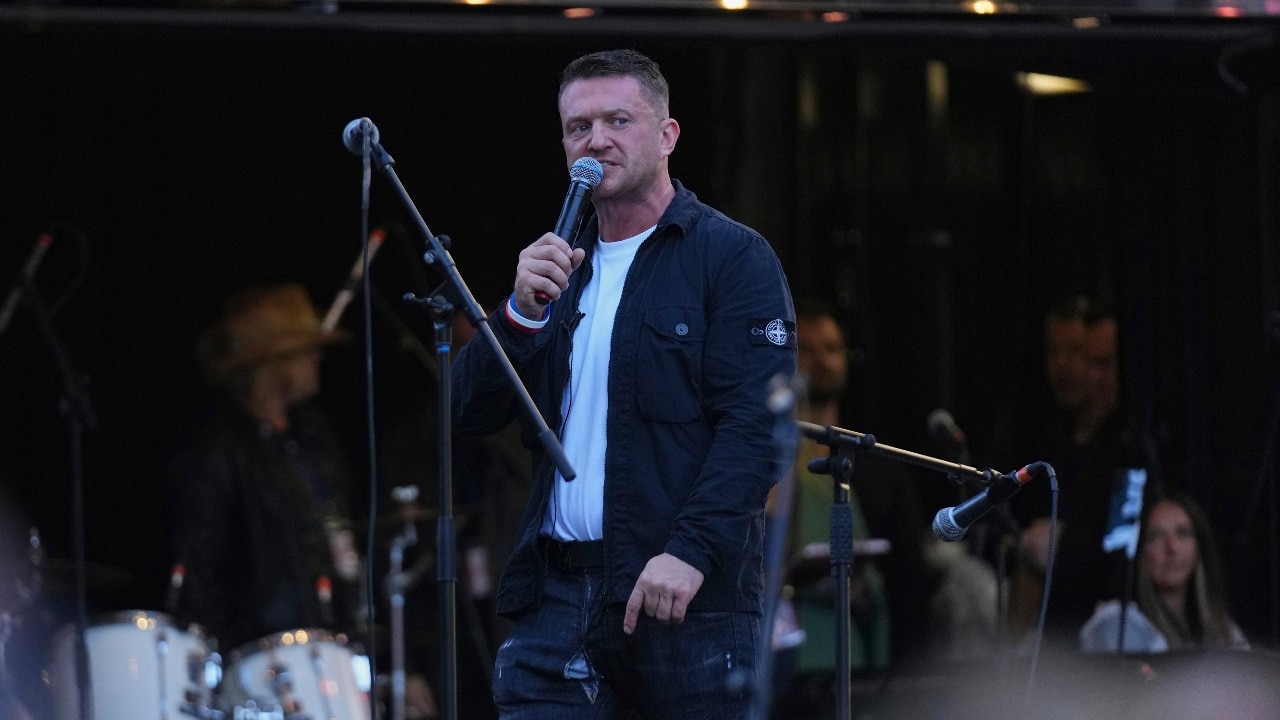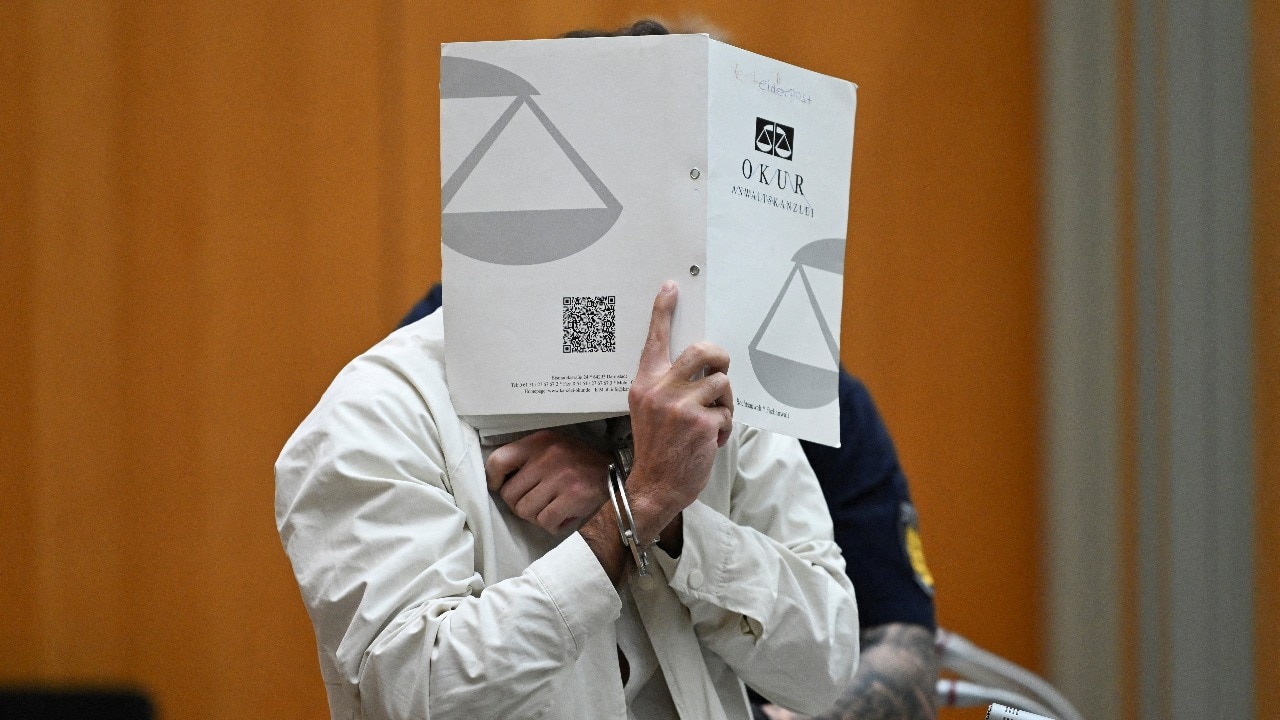Last Updated:July 22, 2025, 13:39 IST
Over 800 Palestinians die while seeking aid: How does the process of giving aid work in Gaza? What makes it dangerous? Explained

Palestinians carry food and humanitarian aid packages delivered by the Gaza Humanitarian Foundation in Rafah, southern Gaza Strip. (AP)
Twenty-eight countries including Britain, Japan and a host of European nations issued a joint statement on Monday saying the war in Gaza “must end now". The foreign ministers of countries, including Australia and Canada, said “the suffering of civilians in Gaza has reached new depths." They condemned “the drip feeding of aid and the inhumane killing of civilians, including children, seeking to meet their most basic needs of water and food".
The statement described as “horrifying" the recent deaths of over 800 Palestinians who were seeking aid, according to the figures released by Gaza’s Health Ministry and the U.N. human rights office.
How does the process of giving aid work in Gaza? What are the dangers involved? Explained
The Israel-Hamas war
Hamas triggered the war when militants stormed into southern Israel on October 7, 2023, killing around 1,200 people and taking 251 others hostage. Fifty hostages remain in Gaza, but fewer than half are thought to be alive. Israel’s military offensive has killed more than 59,000 Palestinians, according to Gaza’s Health Ministry. The ministry is part of the Hamas government, but the U.N. and other international organisations see it as the most reliable source of data on casualties.
What is drip feeding of aid?
The term “drip feeding" of aid in Gaza refers to the extremely limited, tightly controlled, and insufficient flow of humanitarian assistance into the territory since the escalation of conflict in October 2023. Aid deliveries have often fallen far below the daily minimum needed to sustain the population—at times dipping to just 10–20 trucks a day, compared to the pre-war average of 500. Humanitarian groups and UN officials describe this as a deliberate restriction, accusing Israel of using aid as a tool of political pressure, while Israel cites security concerns over aid diversion by Hamas. The result is a humanitarian system that delivers just enough to avoid total collapse, but not enough to prevent widespread hunger, disease, and death. This slow and inadequate supply—characterized as “starvation by design" by some rights groups—forces desperate civilians to risk their lives to obtain even the most basic necessities.

How do Gazans get aid?
Most of the food supplies Israel has allowed into Gaza go to the Gaza Humanitarian Foundation, an American group backed by Israel.
Arrival & First Halt: Aid seekers (on foot, by cart, or vehicle) travel up to a designated drop-off point, usually 1.5 km from the distribution site, where they must disembark and proceed on foot carrying supplies.
Wait at al‑Joura: From there, they walk to al‑Joura—a sandy pit where families wait, often for 12–24 hours, to receive a drone or military “go" signal to move toward the aid point.
Final Approach to Aid Gate: Once the signal arrives (supposedly indicating safe passage), they proceed roughly another 1 km through lines of Israeli military checkpoints, sniper positions, drones, and barriers to reach the guarded gate of the distribution center.
At‑risk even when waiting: Witnesses have reported fire near or into al‑Joura—even before the signal is given—endangering crowds gathered for hours hoping for sustenance.

What Happens Immediately After the Signal
Thousands of people who have waited for hours (often overnight) in al‑Joura or nearby dunes begin sprinting toward the distribution gate to ensure they get aid before the supplies run out, often causing stampede.
To reach the gate, people must cross 500–1,000 meters of exposed terrain.
This area is often surveilled by Israeli drones, surrounded by sniper or observation posts and l ined with Israeli army checkpoints or trenches.
Despite the “go signal," witnesses say that gunfire frequently breaks out, either to control the crowd or for unclear reasons. Many are killed or injured in the chaos — shot by live rounds, rubber bullets, or drone-fired projectiles; crushed in crowd surges or while trying to flee; trampled if they fall.
Reports from UN and journalists estimate dozens to hundreds have died during these rushes since GHF distribution began.
Israeli soldiers or GHF staff allow only a small number of people through the final gate. The rest are either turned back or forced to wait again until the next day.
Kill / No‑Go Zones in Gaza
1. Northern Gaza Governorate (Jabalia, Beit Hanoun, Beit Lahia, Gaza City)
2. Al‑Mawasi / Khan Yunis Area
3. Deir al‑Balah & Eastern Central Gaza Zone
4. Israeli Security / Buffer Corridors: Netzarim, Philadelphi, Morag

Gaza’s aid-related deaths
According to the United Nations and humanitarian sources, at least 875 people have been killed while trying to access food, water, or medical assistance since late May. The vast majority—over 670 deaths—occurred near Gaza Humanitarian Foundation (GHF) distribution centers, primarily in Rafah and Khan Younis.
Another 200+ fatalities were recorded along aid convoy routes, often due to attacks, stampedes, or exposure. In some incidents, such as a deadly surge at a GHF site on July 16, more than 20 people were crushed or suffocated while scrambling for supplies.
Human rights organizations and UN officials have condemned these deaths as the direct result of a broken and dangerous aid system, describing the environment as “inherently unsafe" and calling for urgent changes to ensure civilian protection.
What has Israel said?
Israel’s 21 months of war with Hamas have pushed Gaza to the brink of famine, sparked worldwide protests and led to an Criminal Court arrest warrant against Israel’s Prime Minister Benjamin Netanyahu. “The Israeli government’s aid delivery model is dangerous, fuels instability and deprives Gazans of human dignity," the countries said in their statement. “The Israeli government’s denial of essential humanitarian assistance to the civilian population is unacceptable. Israel must comply with its obligations under international humanitarian law."
Israel and U.S. have rejected the criticism. Israel’s Foreign Ministry rejected the statement, saying it was “disconnected from reality and sends the wrong message to Hamas." “Hamas is the sole party responsible for the continuation of the war and the suffering on both sides," Foreign Ministry spokesperson Oren Marmorstein posted on X.
U.S. Ambassador to Israel Mike Huckabee also rejected the statement from many of America’s closest allies, calling it “disgusting" in a post on X and saying they should instead pressure the “savages of Hamas." Germany was also notably absent from the statement.
Israel and Hamas have been engaged in ceasefire talks but there appears to be no breakthrough, and it’s not clear whether any truce would bring the war to a lasting halt. Netanyahu has vowed to continue the war until all the hostages are returned and Hamas is defeated or disarmed.
With Agency Inputs

At the news desk for 17 years, the story of her life has revolved around finding pun, facts while reporting, on radio, heading a daily newspaper desk, teaching mass media students to now editing special copies ...Read More
At the news desk for 17 years, the story of her life has revolved around finding pun, facts while reporting, on radio, heading a daily newspaper desk, teaching mass media students to now editing special copies ...
Read More
News explainers Want Food? Make It Alive Through The ‘Kill Zone’: The 800+ Deaths At Gaza Aid Centres Explained
Disclaimer: Comments reflect users’ views, not News18’s. Please keep discussions respectful and constructive. Abusive, defamatory, or illegal comments will be removed. News18 may disable any comment at its discretion. By posting, you agree to our Terms of Use and Privacy Policy.

 1 month ago
1 month ago


















